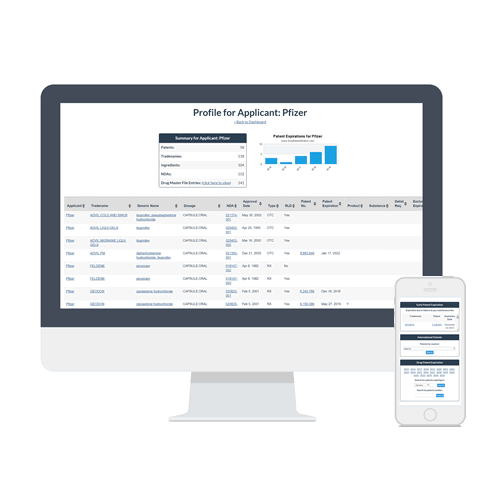Table of Contents
Introduction: The Pharmaceutical Landscape’s Evolving Battlefield

In the ever-changing world of pharmaceuticals, innovation isn’t just about discovering new molecules. It’s also about how those molecules are delivered to patients. Advanced drug delivery methods have become a powerful tool for pharmaceutical companies to maintain their competitive edge and deter generic competition. But why exactly do these complex delivery systems pose such a challenge for generic manufacturers? Let’s dive into the intricate world of drug delivery and uncover the complexity advantage.
The Rise of Advanced Drug Delivery Systems
From Pills to Patches: The Evolution of Drug Delivery
Remember when taking medicine meant simply swallowing a pill? Those days are increasingly behind us. Today’s pharmaceutical landscape is dotted with a diverse array of delivery methods that would have seemed like science fiction just a few decades ago. From long-acting injectables to smart inhalers, the way we administer drugs has undergone a revolution.
The Driving Forces Behind Complex Delivery Systems
What’s pushing this trend towards complexity? Several factors are at play:
- Patient needs: Complex delivery systems often offer improved convenience and adherence.
- Therapeutic efficacy: Advanced methods can enhance drug bioavailability and targeting.
- Market differentiation: Unique delivery systems help branded drugs stand out.
- Patent protection: Novel delivery methods can extend a drug’s lifecycle.
The Complexity Advantage Explained
Barriers to Entry for Generic Manufacturers
When it comes to deterring generic competition, complexity is king. Advanced delivery systems create significant hurdles for generic manufacturers looking to replicate branded drugs. These barriers include:
- Technical challenges in formulation
- Specialized manufacturing processes
- Regulatory hurdles in proving bioequivalence
- Higher development costs
“The complexity of advanced delivery systems often serves as a natural barrier to entry for generic competitors, providing an extended period of market exclusivity for innovative pharmaceutical companies.” – Dr. Sarah Johnson, Pharmaceutical Industry Analyst[1]
The Bioequivalence Conundrum
One of the biggest challenges for generic manufacturers is proving bioequivalence. With complex delivery systems, it’s not just about matching the active ingredient; the entire delivery mechanism must be replicated to ensure the same therapeutic effect.
Types of Advanced Delivery Methods and Their Advantages
Long-Acting Injectables: The Slow and Steady Approach
Long-acting injectables offer sustained drug release over extended periods, improving patient adherence and reducing dosing frequency. Examples include treatments for schizophrenia and contraceptives.
Transdermal Patches: More Than Skin Deep
Transdermal patches provide continuous drug delivery through the skin, bypassing the digestive system and offering steady drug levels in the bloodstream.
Smart Inhalers: Breathing New Life into Respiratory Treatments
Smart inhalers not only deliver medication but can also track usage and provide data to healthcare providers, improving treatment outcomes for conditions like asthma and COPD.
Nanoparticle Formulations: The Tiny Revolution
Nanoparticle drug delivery systems can enhance drug solubility, improve targeting, and reduce side effects. They’re particularly promising in cancer treatments.
The Strategic Implications for Pharmaceutical Companies
Lifecycle Management: Extending Patent Protection
By reformulating existing drugs with advanced delivery systems, pharmaceutical companies can effectively extend their market exclusivity beyond the original patent expiration.
Differentiation in Crowded Markets
In therapeutic areas with multiple treatment options, a unique delivery system can set a drug apart from its competitors, potentially capturing a larger market share.
Premium Pricing Opportunities
The added value of advanced delivery systems often justifies higher prices, allowing pharmaceutical companies to maintain profitability even as generic competition emerges for older formulations.
The Regulatory Landscape: A Double-Edged Sword
FDA Guidance on Complex Generics
The FDA has recognized the challenges posed by complex generics and has issued guidance to facilitate their development. However, the path to approval remains more complicated than for traditional generics.
The Balancing Act: Innovation vs. Accessibility
Regulators face the challenge of encouraging innovation while ensuring timely access to affordable generic alternatives. This tension shapes policies and approval processes for complex generics.
Case Studies: Success Stories in Advanced Drug Delivery
Abilify Maintena: Revolutionizing Schizophrenia Treatment
This long-acting injectable formulation of aripiprazole has significantly improved treatment adherence for schizophrenia patients, while also providing extended market exclusivity for its manufacturer.
Neulasta Onpro: Simplifying Cancer Care
This on-body injector for pegfilgrastim has improved the patient experience in cancer treatment while creating a significant barrier to generic competition.
The Future of Advanced Drug Delivery Systems
Emerging Technologies on the Horizon
The future promises even more innovative delivery methods, including:
- 3D-printed medications
- Microchip-based drug delivery
- Targeted nanorobots
The Role of Artificial Intelligence in Drug Delivery
AI is set to play a crucial role in optimizing drug delivery systems, from predicting patient responses to fine-tuning release profiles.
Challenges and Criticisms of the Complexity Advantage
The Cost of Innovation: Who Pays the Price?
Critics argue that the complexity advantage can lead to higher drug prices, potentially limiting access to essential medications for some patients.
Balancing Innovation and Accessibility
The pharmaceutical industry faces the ongoing challenge of justifying the costs of advanced delivery systems while ensuring broad access to life-saving treatments.
Strategies for Generic Manufacturers
Investing in Advanced Capabilities
Some generic manufacturers are rising to the challenge by investing in their own advanced delivery capabilities, positioning themselves to compete in the complex generics market.
Collaboration and Licensing: If You Can’t Beat Them, Join Them
Strategic partnerships between generic manufacturers and innovator companies can provide a path to market for complex generics.
Conclusion: The Evolving Landscape of Pharmaceutical Competition
The complexity advantage offered by advanced drug delivery systems has reshaped the competitive landscape in the pharmaceutical industry. While it presents challenges for generic manufacturers and raises concerns about drug pricing, it also drives innovation that can lead to improved patient outcomes. As technology continues to advance and regulatory frameworks evolve, the interplay between innovative delivery methods and generic competition will remain a critical factor in shaping the future of healthcare.
FAQs
- Q: How long does the complexity advantage typically last for a branded drug?
A: The duration can vary widely depending on the specific delivery system and therapeutic area, but it often extends market exclusivity by several years beyond the original patent expiration. - Q: Are there any advanced delivery methods that have been successfully replicated by generic manufacturers?
A: Yes, some complex generics have made it to market, particularly in areas like inhalers and topical formulations. However, the process is often lengthy and challenging. - Q: How do advanced delivery systems impact drug pricing?
A: Advanced delivery systems often justify higher prices due to their added value in terms of efficacy, convenience, or adherence. However, this can also lead to concerns about affordability and access. - Q: Can patients always choose between advanced delivery systems and traditional formulations?
A: Not always. In some cases, the advanced delivery system may be the only available option, especially if the original formulation has been discontinued. - Q: How is the FDA addressing the challenges of approving complex generics?
A: The FDA has issued guidance documents and established programs to support the development of complex generics, aiming to balance innovation incentives with the need for affordable alternatives.
Sources cited:
[1] https://www.drugpatentwatch.com/blog/the-complexity-advantage-why-advanced-delivery-methods-deter-generic-competition/
Citations:
[1] https://www.drugpatentwatch.com/blog/the-complexity-advantage-why-advanced-delivery-methods-deter-generic-competition/
[2] https://www.youtube.com/watch?v=YXL2JfhSLTw
[3] https://www.procore.com/library/construction-project-delivery-methods
[4] https://www.whiting-turner.com/innovation/advanced-delivery-methods/
[5] https://psu.pb.unizin.org/buildingconstructionmanagement/chapter/project-delivery-methods/


